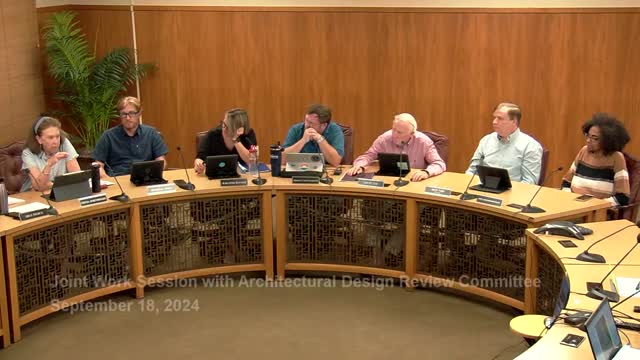Housing Crisis Sparks Debate Over Downtown Development Plans
September 20, 2024 | Concord, Merrimack County , New Hampshire
This article was created by AI summarizing key points discussed. AI makes mistakes, so for full details and context, please refer to the video of the full meeting. Please report any errors so we can fix them. Report an error »

In a recent government meeting, city officials engaged in a robust discussion regarding the integration of housing within downtown development projects. The conversation highlighted the need for a balanced approach to urban planning that encourages both residential and commercial growth.
One key point raised was the potential for new developments to include a minimum of ten housing units, a requirement that some officials felt could be overly restrictive. Concerns were voiced about the possibility of denying projects that do not meet this criterion, which could hinder the city's goal of fostering a vibrant downtown atmosphere. Officials debated whether to maintain this requirement or allow for variances that would enable developers to pursue projects without the mandatory housing component.
The dialogue also touched on the importance of architectural design in new developments. A committee member emphasized the need for high-quality design standards while ensuring that the city remains developer-friendly. The committee, which has decades of accumulated experience in design, aims to provide constructive feedback to the planning board to facilitate successful projects that align with the city's vision.
Additionally, the meeting addressed existing regulations concerning building height and design, particularly the requirement for buildings to step back at certain heights. Officials discussed the implications of these regulations on visual aesthetics and the overall skyline, suggesting that the language could be refined to clarify requirements for buildings with dual frontages.
As the meeting concluded, there was a consensus on the importance of collaboration between the planning board and design review committees to ensure that development aligns with community goals while remaining adaptable to the needs of developers. Future meetings will continue to explore these themes, with a focus on refining regulations and fostering a cooperative environment for urban development.
One key point raised was the potential for new developments to include a minimum of ten housing units, a requirement that some officials felt could be overly restrictive. Concerns were voiced about the possibility of denying projects that do not meet this criterion, which could hinder the city's goal of fostering a vibrant downtown atmosphere. Officials debated whether to maintain this requirement or allow for variances that would enable developers to pursue projects without the mandatory housing component.
The dialogue also touched on the importance of architectural design in new developments. A committee member emphasized the need for high-quality design standards while ensuring that the city remains developer-friendly. The committee, which has decades of accumulated experience in design, aims to provide constructive feedback to the planning board to facilitate successful projects that align with the city's vision.
Additionally, the meeting addressed existing regulations concerning building height and design, particularly the requirement for buildings to step back at certain heights. Officials discussed the implications of these regulations on visual aesthetics and the overall skyline, suggesting that the language could be refined to clarify requirements for buildings with dual frontages.
As the meeting concluded, there was a consensus on the importance of collaboration between the planning board and design review committees to ensure that development aligns with community goals while remaining adaptable to the needs of developers. Future meetings will continue to explore these themes, with a focus on refining regulations and fostering a cooperative environment for urban development.
View full meeting
This article is based on a recent meeting—watch the full video and explore the complete transcript for deeper insights into the discussion.
View full meeting
